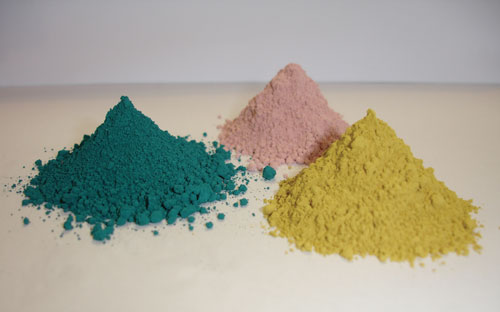The Difference Between Dye and even Pigment

A pigment is a stuff that is used to create objects colored. This is usually incroyable in water. On the other hand, some dyes are usually soluble in water sooner or later in their own use. They are built of inorganic or perhaps organic compounds. For example. To understand typically the difference between dyes and pigments, a few examine the involving them.
ceramic pigments
Ceramic pigments are a class of shades which are manufactured by oxides and also other substances that are calcined to produce several ceramic products. These pigments can always be used alone or perhaps in combination using other pigments to produce the preferred effect. It is usually important to evaluation ceramic pigments in a frit, glaze over or slip starting before with them inside a finished product. Ceramic pigments will be relatively expensive when compared with ceramic oxides, and the most suppliers sell all of them in small quantities, often no even more than one fourth pound.
Wastes from diverse industries enables you to generate ceramic pigments. inorganic pigments of these waste materials are hazardous and even therefore should be predisposed of responsibly. Types of such wastes include titanium slag, ashes from the anaerobic treatment of municipal sewerage, leather sludge, plus rice husk biomass.
The global ceramic pigments companies are segmented straight into five main locations: America, Europe, Asian countries Pacific, Latin The united states, and Middle East & Africa. Typically the Asia-Pacific region network marketing leads the market industry in words of consumption plus urbanization, and will be expected to be a new lucrative place regarding manufacturers. In Northern America, the markets is dominated by simply the U. S., mainly because of the substantial standard of residing in this area. However, competitors from printing ink is expected to hamper the expansion regarding the ceramic pigments market in this specific region.
Ceramic pigments are synthetic chemical substances with crystalline set ups and are employed in ceramics to supply color. These pigments are thermally and even chemically stable, and are immune to oxidizing and reducing brokers. In addition, they can be used to protect metals from corrosion, the industry common issue with ceramics. Making use of these pigments within a protective layer is a good idea in order to be able to increase the lifetime of colors.
hard coating
Ceramic layer can be a polymer that will is applied above painted surfaces. The ceramic coating kinds a chemical bond with the color, preventing it through chemical reactions and abrasion. It will be usually used in order to improve the look regarding a product. This specific type of coating is done by passing ceramic powder by way of a spray procedure that involves ionized gas. The porcelain particles that are sprayed onto the substrate form the high-density coating with a high adhesion.
A variety associated with ceramic pigments are usually available. Some are merged with ceramic powdered. The quantity of pigment needed may differ depending on typically the desired color power. pigment powder may range from 1% to be able to 10%. Generally, however, the quantity will never affect the materials employed in the porcelain. Ceramic glazes in addition to frits are even more durable and attractive when coated together with pigments.
Ceramic pigments can be placed on many different surfaces. People that have a shiny finish will advantage from the glossiness of the pigment. For example , a high-gloss finish will always be enhanced by the use of the pearlescent pigment. Tones formulated with a pearlescent pigment enables you to create the surface of a ceramic surface appear more vibrant and appealing.

Pigments who have unique properties are useful for coatings and glazes. CICPs, for instance , are made of spinel and rutile uric acid, that have stable molecular structures. They furthermore exhibit enhanced heat and chemical level of resistance. In addition, that they improve hiding energy and infrared reflectivity. They can get used in powder coatings and usually are suitable for most solvent systems.
ceramic shade
Manufacturing ceramic color pigments is some sort of complex process. Many types are obviously occurring, while other people are synthesized in an industrial setting. Natural pigments are typically high within impurities. Synthetic pigments are more expensive and include multiple production levels. Based on the colour plus its application, a new pigment may be lighting or dark. These types of pigments are formulated from oxides in addition to carbonates. Some are formulated with different crystal structures to develop specific shades.
The chromatic intensity regarding a pigment will depend on its compound size, particle circulation, and chemical stableness. The proportion of pigments in a new glaze can range from 1 ) five per cent to 5%, while higher percentages are generally necessary for tougher colors. Particle sizing also has an impact on the ultimate product, particularly in the situation of ceramics.
Hard pigments are usually applied alone or in combination with some other pigments or oxides. In order to determine typically the best combination of these kinds of compounds, it is best to evaluation them in the glaze or fall base. Using frits as being a test glaze is an excellent way in order to find out precisely what pigments will work best with the glaze. Ceramic color pigments can be expensive to buy, thus most suppliers just sell them inside of small quantities.
Porcelain pigment compositions need several advantages, which include high thermal stability and chemical level of resistance to molten cup. They are generally used to color hard glazes, enamels, in addition to tiles. They will also be utilized to color a variety of materials, such as glass.
